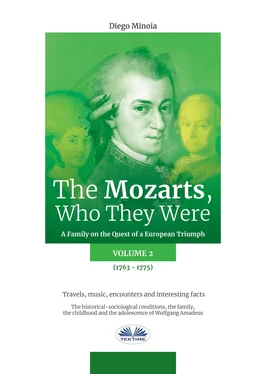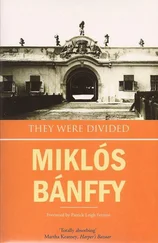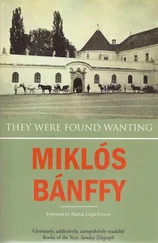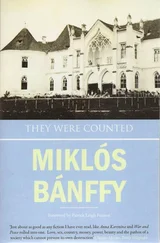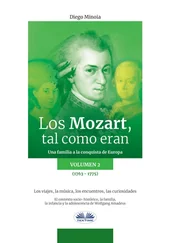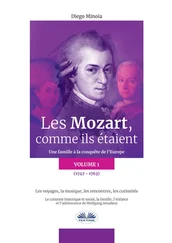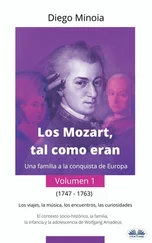The optimal habitual association with, and lover to Louise d'Epinay, writer and entertainer of one of the most famous Parisian “parlors” allowed his social ascension that led him to receive diplomatic posts until he was nominated Baron in 1774 by the Empress of Austria Maria Theresa. As a literary and musical critic, he wrote for the famous magazine Mercure de France.
In the Mozart's first journey to Paris, he played an essential role in their success. Though later, when Wolfgang went to Paris alone with his mother, Grimm was cold and could not stand him as in the past. In his final letter from Paris to his friend Hagenauer, Leopold Mozart spoke of Grimm in the following: “...this man, my good friend, Mr. Grimm, it is thanks to him that here I have been able to obtain everything”.
Even while provided with many letters of recommendation (among which that of the Count de Chatelet French Ambassador in Vienna, the Count Starhemberg Imperial Austrian Emissary in Paris, the Count von Cobenzl Minister of Brussels, the Prince of Conti, etc.), according to Leopold, none of them were good for anything.
Only Count Grimm “did everything”...and imagine, this aid all came from a letter written by the wife of a merchant from Frankfurt who he had met by pure chance in that city where they had stopped over on their way to Paris!
So, he gave Leopold Mozart 80 gold florins for the performance of the children at his home, then he set about distributing 320 tickets for the first concert at the theater of Mr. Felix, paying for the wax needed for the 60 candles per table to illuminate the room.
The early information on Versailles sent to Salzburg by Leopold Mozart are a bit amusing as, while speaking about the Marquise of Pompadour (former mistress of King Louis XV), he compares her to the defunct Mrs. Stainer, a Salzburg friend. Regarding her personality though, he says that she is extremely conceited and still continues to orchestrate everything (even though she had not officially been the King's mistress for at least a dozen years – A/N). He describes her as a woman with an uncommon spirit, large and corpulent, but well-proportioned, blonde, still attractive and was surely very beautiful in her youth, seeing as she had enraptured the King. The Pompadour apartments at Versailles, which faced the gardens, were described by Leopold Mozart as “ a paradise ”, while the palace in the Faubourg St. Honoré, used as the Parisian residence was described as magnificent. The palace (today it is the official residence of the French President of the Republic) had been built just a few decades previous for the Count d'Evreux; it was bought in 1753 by King Louis XV for 730,000 livres and donated to Madame de Pompadour, his favorite at that time. Evidently, the Mozarts had been admitted since Leopold describes the music room that housed a golden harpsichord painted “ with great art ” and on the walls hung two life size paintings of Madame de Pompadour and the King Louis XV. The cost of living was also very high at Versailles, and luckily in that period, it was very hot writes Leopold (in December?), otherwise there would have been the cost of wood for the price of 5 soldis per log to warm the lodging. The Mozarts lived in Versailles for two weeks on a road that, keeping in mind the two children of the family and their talents, was appropriately named: Rue des Bon Enfants (Road of the Good Children).
The comfort of a heating system
Relocating from one society that was used to the cold temperatures, or rather, protecting themselves with heavy clothing, allows us to look at the relatively rapid development of the comforts of heating: first in public places (hospitals, barracks, offices) and then private homes.
The wall fireplace appears to have been invented by the Italians (we first hear of it in Venice around the 13 thcentury) and, compared to a central open fire, it allowed the rooms to be less invaded by smoke, but was not very efficient in dispersing the heat. Moreover, it “roasted” one's face and front of the body, leaving the backside freezing cold.
The newest invention was the stove (in iron, cast iron or ceramic) that saved fuel and offered a more homogeneous and pleasant heat. The fireplace required repeated operations and maintenance to keep it functioning: supplies of wood (to purchase, stack, carry into the house, disposing the ashes or using them for the monthly laundry).
We find a reference to the weight of the chore related to wood in a letter from Leopold Mozart to Hagenauer from Munich, dated 10 November 1766: “I ask you, or rather your wife, to find us a good housekeeper, above all in this period in which we need to continually fill the stoves with wood. These things are essential, or rather a malum necessarium (a necessary evil – A/N)”.
The embers were covered in the evening to prevent frequent household fires and to facilitate starting the fire back up in the morning. Smoke was the unavoidable companion in most homes, where the stove was central to the domestic activities in the kitchen.
The rooms, if there were any, were outdoors, so to stay warm during the cold, it was necessary to sleep with heavy clothing, possibly heating the bedding with bed warmers and braziers.
Stoves were certainly the most convenient and the wealthy, naturally, were the first to have access, even in more than one room of their apartments while keeping the antique and imposing fireplaces in the entertainment salons which was becoming a fading symbol of power.
Satisfying the new massive need for heat in the household provoked an increase in the demand for wood (this was before other forms of combustion, such as coal, were available at the turn of the century) which caused an increase in the price of up to 60/70%.
During the coldest winters, the poor ransacked the woods and forests, risking getting caught by the King's Guards or by the nobility's property foresters..
But wood, peat and coal were not the only forms of combustion used: the poor had less and could not afford to be queasy when it came to foul odor, so they used manure that, duly dried out had the caloric power equal to peat and even superior to wood (4.0 compared to an average measure of 3.5 of wood).
If finding manure was easy enough in the country, the poor in the city had to gather the horses' “leftovers”.
Even the windows (a certified innovation in Italian cities such as Genoa and Florence at the turn of the 14 thcentury) gradually substituted wooden shutters with canvases soaked in turpentine (serving to make the fabric semi-transparent) which contributed to the struggle against the cold.
With glass windows, the necessity for light and heat merged: glass became lighter and clearer, illuminating indoor establishments which had for centuries had been dark and damp. Initially, small and round glass windows joined by lead (as can be seen in cathedrals) were invented, progressing with construction techniques to larger and clearer window panes.
Fortunately, the exhibitions of the two prodigious children at the Court began to show some profit. A gold tobacco tin and a small, but very valuable watch was given to Wolfgang by the Countess Adrienne-Catherine de Noailles de Tessé (the Dame of Honor of the Dauphin and mistress of the powerful Prince of Conti to which Wolfgang had dedicated two sonatas on the harpsichord which was composed and published in the following weeks), a small transparent and engraved gold tobacco tin for Nannerl and a silver pocket-sized escritoire with a matching silver pen for Wolfgang from the Princess of Carignano. Other gifts arrived in the following days: a red tobacco tin with gold rings, a tobacco tin in glass material ingrained in gold, a tobacco tin in “ laque Martin ” (also known as “ vernis Martin ”, invented in 1728 by the Martin brothers, an imitation of Chinese and Japanese lacquer, it was much more economical as it was initially produced with copal, a resinous substance similar to amber) with flowers and pastoral instruments in enamaled gold, a tiny ring mounted in gold with an antique setting, as well as a quantity of gifts whose value Leopold did not underestimate (ribbons for daggers, arm ribbons and tassels, tiny flowers for Nannerl's bonnets, small kerchieves and other necessary accessories to be fashionable in Paris). One last curious gift was a solid gold toothpick holder given to Nannerl.
Читать дальше
